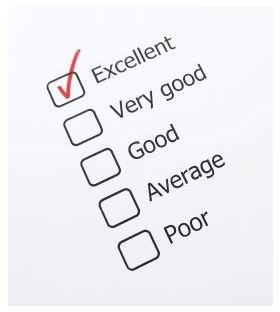Performance Appraisal Rating Problems: Limitations of Performance Evaluation Methods
Limitations of the Performance Appraisal
A large number of managers are faced with performance appraisal rating problems because of the inherent flaws in almost every type of performance evaluation method. There is a prevailing dissatisfaction among companies about the inaccuracies in these methods that make it a challenge to evaluate employee performance objectively and make valid assessments. A wrong evaluation can have an adverse impact and lead to employee discontent instead of motivation.
Errors in Human Evaluation
Errors in rating employees primarily occurs because human judgment is subjective and it’s prone to natural biases and mistakes. If one appraiser is more lenient by nature, he may tend to give higher performance ratings to people under him. On the other hand, a severe appraiser may do just the opposite of the lenient appraiser. There may also be appraisers with centrist tendencies that do not rate the employees in an extreme manner. There are also natural biases or prejudices that may creep in unintentionally into an appraisal. All these issues may result in discrepancies, especially when the ratings of all employees under different appraisers are considered together as a whole.
Deficiency of Comparison Methods
Performance appraisal rating problems with comparison methods often occur because it’s difficult to evaluate between two individuals as they will rank differently on different parameters. It’s also natural for one person to have certain good and bad qualities and the other person to have totally unique qualities of their own. Furthermore, each individual has a different nature of job and responsibility, and the challenges in each job are different. Therefore, it becomes difficult to compare quantified performance results. Thirdly, inter-departmental comparisons are difficult to make because of an entirely different nature of work in each department.
Difficulties with Graphic Rating Methods
Most graphic rating scales fail to pin-point specific instances or specific feedback about an employee’s behavior, actions or overall attitude and performance. Secondly, the results may lack reliability because different appraisers will have a different view of the same thing. If the graphic scale rates employees on the basis of average, good and outstanding, the definition of “average” may tend to differ between different appraisers. So the overall results are bound to be skewed when all managers submit their appraisal reports about different employees.
Consistency of Appraisal Methods
Another problem with rating employee performance appraisals comes when organizations use more than one type of employee review process. HR departments and business owners should consider using the same performance review across the board to keep the review process fair. If you use a 360 performance appraisal for one department and a basic performance review for another department, chances are the ratings will show a variety of results—and perhaps not accurate results.
Lack of Corrective Mechanisms
The most basic of all performance appraisal rating limitations is that they fail to provide any guidance regarding how to improve the ratings for the future. Some managers feel that appraisal reports that are not accompanied by adequate suggestions and guidance on alternatives and tips for behavioral improvement, fail to serve their real purpose. On the contrary, they may only add to an employee’s lack of motivation or dampen his enthusiasm, particularly if there are flaws in the appraisal report. For this reason, a lot of companies are adopting the Management by Objectives (MBO) approach to replace traditional performance appraisal rating systems because of its more holistic approach to evaluating and improving employee performance.
Photo Credit: www.sxc.hu kikashi
